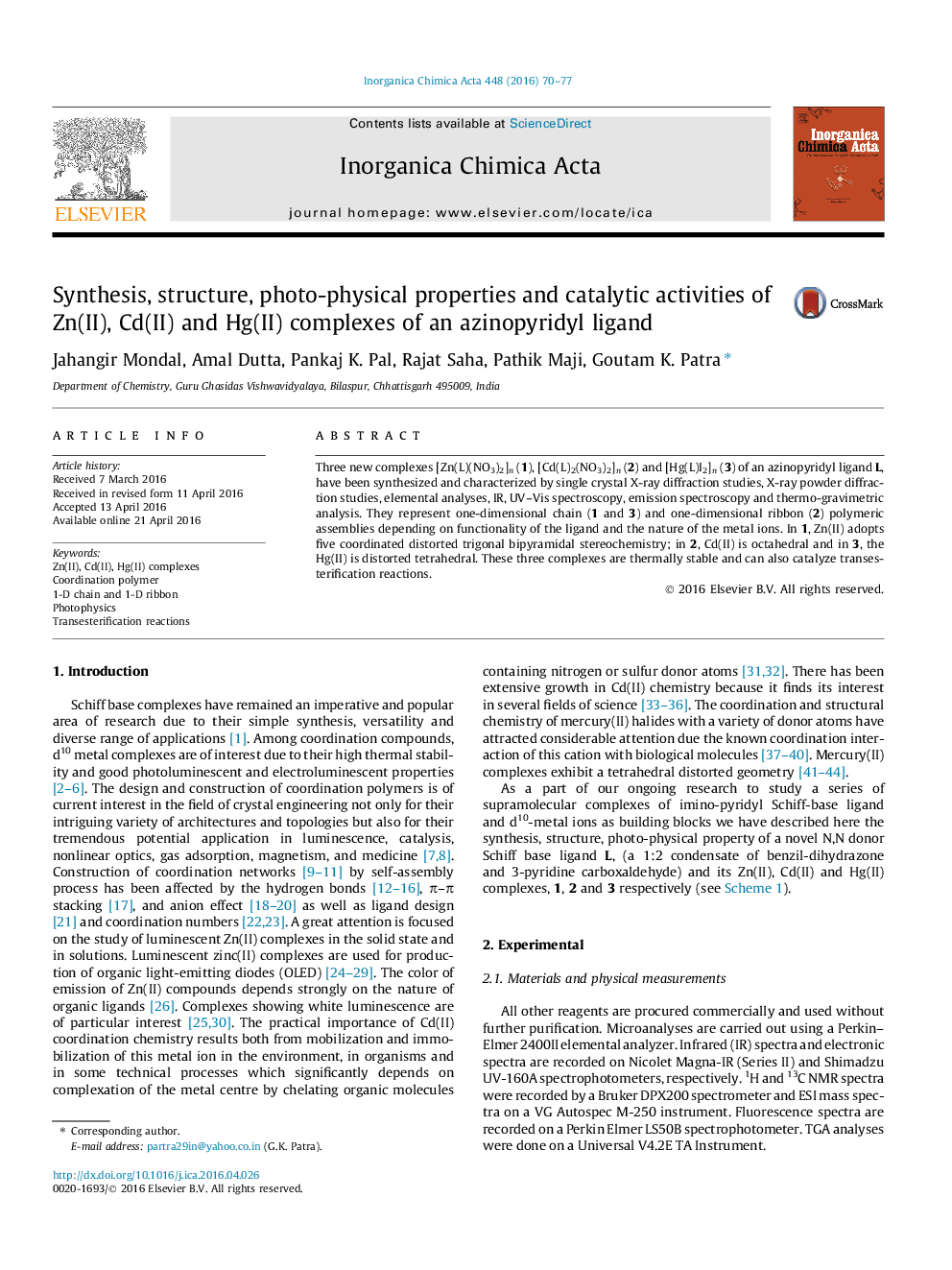| Article ID | Journal | Published Year | Pages | File Type |
|---|---|---|---|---|
| 1306376 | Inorganica Chimica Acta | 2016 | 8 Pages |
•Synthesis and characterization of Zn(II) (1), Cd(II) (2) and Hg(II) (3) complexes of an azino-pyridyl ligand.•1 and 2 are 1-D chain, whereas 2 is 1-D ribbon.•These complexes are thermally stable and photoluminescent.•These can also catalyze transesterification reactions.
Three new complexes [Zn(L)(NO3)2]n (1), [Cd(L)2(NO3)2]n (2) and [Hg(L)I2]n (3) of an azinopyridyl ligand L, have been synthesized and characterized by single crystal X-ray diffraction studies, X-ray powder diffraction studies, elemental analyses, IR, UV–Vis spectroscopy, emission spectroscopy and thermo-gravimetric analysis. They represent one-dimensional chain (1 and 3) and one-dimensional ribbon (2) polymeric assemblies depending on functionality of the ligand and the nature of the metal ions. In 1, Zn(II) adopts five coordinated distorted trigonal bipyramidal stereochemistry; in 2, Cd(II) is octahedral and in 3, the Hg(II) is distorted tetrahedral. These three complexes are thermally stable and can also catalyze transesterification reactions.
Graphical abstractThree new complexes [Zn(L)(NO3)2]n (1), [Cd(L)2(NO3)2]n (2) and [Hg(L)I2]n (3) of an azino pyridyl ligand L, have been synthesized and characterized by single crystal X-ray diffraction studies. In 1, Zn(II) adopts five coordinated distorted trigonal bipyramidal stereochemistry; in 2, Cd(II) is octahedral and in 3, the Hg(II) is distorted tetrahedral. These three complexes are photoluminescent, thermally stable and can also catalyze transesterification reactions.Figure optionsDownload full-size imageDownload as PowerPoint slide
